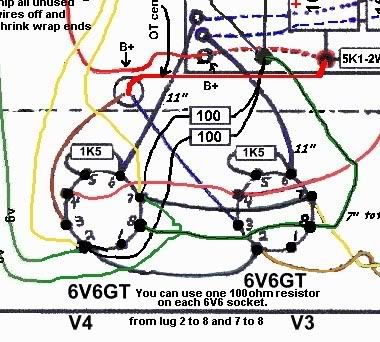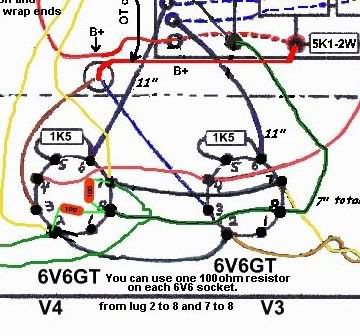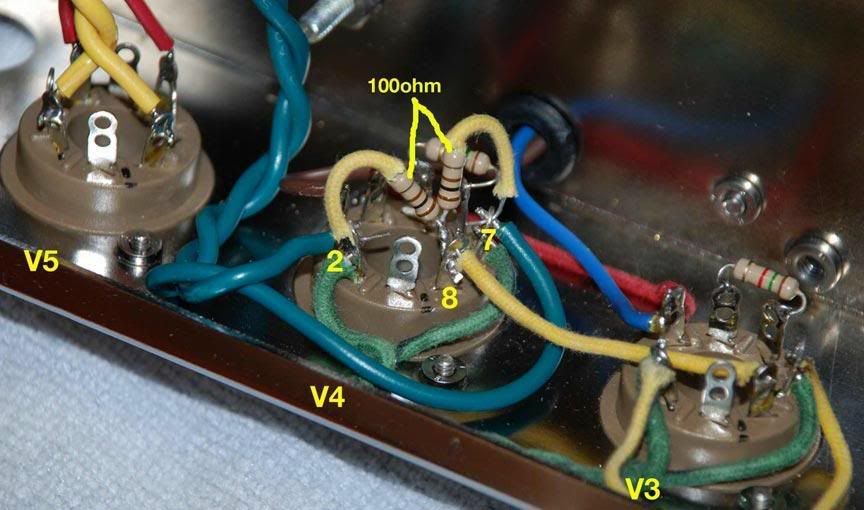Hi, i am building a Mission amp 5E3 and there is a suggestion to put the 100ohm resistors on pins 2 - 8 and 7-8 instead of the way its shown on the orig drawing. I am new at this so i have re-drawn it and wondering if it makes sense the way i have it.
a


a



Comment